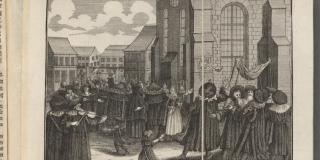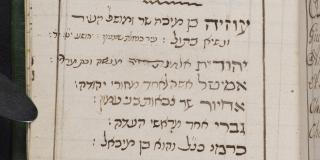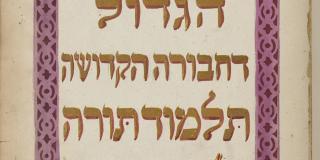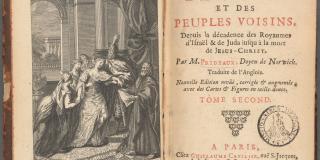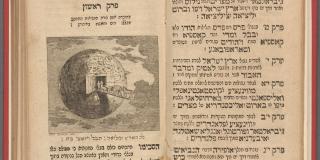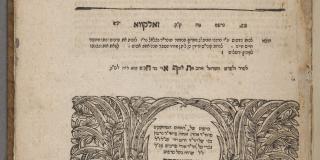
Histoire des Juifs et des peuples voisins
Humphrey Prideaux, 1648–1724
Histoire des Juifs et des peuples voisins: depuis la décadence des Royaumes d’Israël & de Juda jusqu’à la mort de Jesus-Christ (History of the Jews and Neighboring Peoples: From the Declension of the Kingdoms of Israel & Judah until the Death of Jesus Christ)
Paris: G. Cavelier, 1726
Humphrey Prideaux was a renowned English Hebraist and Orientalist, professor of Oriental languages at Oxford University, and the Dean of Norwich. His book The Old and New Testament Connected in the History of the Jews and Neighboring Nations: From the Declension of the Kingdoms of Israel and Judah to the Time of Christ was first published in London around 1716. During the European Enlightenment it became a staple reference book for the history of the Jews, highly regarded for its comprehensive approach, clarity, and accessible language. It was specifically aimed at a general audience who strived to learn more about ancient Judaism. Prideaux’s book was reprinted numerous times in original and revised editions and translated into French and German—a sign of its popularity.
Volume Two (Tòme Second) of the new, revised French edition, which slightly deviated from the English original in its title and omitted the initial words referencing the New and Old Testament, was published in 1726 and is shown here. It is open to a copperplate etching by an unknown artist. The illustration refers to the second chapter of the biblical Book of Esther and shows an exquisitely dressed Esther, three handmaidens, and a eunuch at her meeting with King Ahasuerus in his palace.
The New York Public Library believes that this item is in the public domain under the laws of the United States, but did not make a determination as to its copyright status under the copyright laws of other countries. This item may not be in the public domain under the laws of other countries. Though not required, if you want to credit us as the source, please use the following statement, "From The New York Public Library," and provide a link back to the item on our Digital Collections site. Doing so helps us track how our collection is used and helps justify freely releasing even more content in the future.
